Why this conversation matters: practice tests aren’t just about questions
If you’ve ever taken a full-length SAT practice test and then felt like the real exam was somehow different — slower, faster, or just stranger — you’re not imagining things. There’s a psychological distance between sitting for practice at home and walking into a testing room (or logging into Bluebook) on the day that counts. The differences aren’t always about content. They’re about timing, environment, expectations, fatigue, and how your brain responds when it knows the result matters.
What we mean by “psychological distance”
Psychological distance describes how close or far away an event feels in your mind. A practice test scheduled on a Saturday afternoon might feel comfortably distant: you know you can try again next week. The real SAT, even if it’s digital and convenient, often feels immediate, high-stakes, and final. That shift in perceived importance changes everything — attention, risk-taking, decision speed, and even how you interpret a tricky sentence or math prompt.
Key psychological differences between practice tests and the real Digital SAT
Below are the common psychological and situational gaps students report. Recognizing them is the first step to closing them.
- Stakes and stress: Practice feels safe; the real test feels consequential. That boosts adrenaline and can narrow attention in unhelpful ways.
- Environment and routine: At home you control distractions and breaks. Test day introduces unknowns — unfamiliar chair, timing rhythm, or the specific digital interface behavior — which can unsettle focus.
- Timing pressure: Even with identical timing rules, perceived time pressure increases when you care about the outcome. This often leads to rushing or second-guessing.
- Adaptive experience vs. full-length practice: The Digital SAT is delivered through Bluebook with section-level timing and digital tools. Practicing in the same environment helps, but some practice formats (like paper or third-party digital mocks) can feel different.
- Fatigue and concentration: Real tests often bring cumulative fatigue — early morning logistics, last-minute nerves, and the length of the experience — which can show up late in the second section of the test.
- Expectation management: Students often expect their practice test score to map directly to a real test score. When it doesn’t, disappointment can cause discouragement and poor decisions moving forward.
How these differences manifest during the exam
Here are the practical ways the psychology plays out during a real testing session, with examples you’ve probably experienced or can relate to.
- Tunnel vision on single tough question: On a practice test you might calmly flag and move on. Under test-day pressure, you might fixate on one question for several minutes, losing time for easier points later.
- Overcorrection: After one difficult passage, students often change strategy mid-test (e.g., from careful work to reckless speed), creating inconsistent performance.
- Tool unfamiliarity: Even small friction — like using the digital equation editor or navigating back to a flagged question — can create micro-stressors that add up.
- Self-talk: Negative inner dialogue (“I always choke on the real thing”) lowers working memory available for reasoning.
Bridging the gap: 12 practical tactics that align psychology with performance
These strategies are designed to make your practice tests mirror the real test not only in structure, but in mental experience.
- Practice in the same environment and platform: Use Bluebook or an official digital practice environment whenever possible. Simulate your test-day setup: time of day, desk, chair, snacks, and permitted materials.
- Run full blocks, not just sections: Build stamina by mimicking the actual flow of the exam. Fatigue management is a skill you can train.
- Simulate consequences: Make one or two practice tests feel real: no retakes for a week, note results publicly to a friend or coach, or use a small-forfeit/reward system to create emotional stakes.
- Practice pacing strategies as rituals: For example, check the clock every certain number of questions, or use predictable sprints for multiple-choice clusters.
- Practice transition routines: Develop a 30-second reset ritual you do between sections: deep breath, a short stretch, or a quick scan of the next section’s layout.
- Deliberate error review: After each practice test, do a guided review focusing on the emotional mistakes (where you panicked or fixated) as much as the content mistakes.
- Train distraction tolerance: Occasionally introduce small, harmless distractions during practice (background café noise, slightly uncomfortable chair) so minor disruptions feel normal on test day.
- Use checklist-driven decisions for guessing: Decide in advance when to guess, when to flag, and when to invest time — make this a rule, not an emotion-based choice.
- Develop positive pre-test rituals: Short, repeatable actions — a five-minute breathing exercise, a quick visualization of success, or a trusted warm-up question set — that signal your brain: we are prepared.
- Log cognitive states: Keep a short journal after each practice test noting stress level, energy, confidence, and where attention drifted. Patterns reveal what to fix.
- Practice with accommodations if you’ll use them: If you plan to use text-to-speech, extra time, or other accommodations, practice with those settings in Bluebook. Familiarity reduces friction and anxiety.
- Consider targeted coaching: A few sessions focused on test-day psychology — not just content — can give outsized returns. Personalized tutoring can help turn habits into reliable routines.

How to interpret practice test scores without risking your morale
Practice-test scores are informative, but they’re not destiny. Here’s how to use them without letting a single number derail your progress.
- View scores as scanners, not verdicts: A score tells you where effort should go next, not whether you’re fundamentally “good” at the test.
- Look for trends: One high or low score is noise. Three tests over several weeks reveal real movement.
- Break down by skill, not only total: If Reading is lagging but Math is steady, tailor the study plan. That’s more actionable than a composite score.
- Match practice types to goals: Use diagnostic tests to identify weaknesses, timed Bluebook simulations for stamina, and question sets for targeted content practice.
Table: How to use different types of practice for psychological and skill training
| Practice Type | Primary Purpose | How it helps psychologically |
|---|---|---|
| Official Bluebook timed practice | Test-day simulation | Builds familiarity with interface and reduces digital friction; conditions your anxiety response to the platform. |
| Paper printouts (for those with paper accommodations) | Alternate-format stamina practice | Trains deep focus and physical pacing; useful for students who test on paper. |
| Short drills & targeted question sets | Skill-building | Improves confidence by converting unknowns into practiced routines; reduces worry about specific question types. |
| Low-stakes practice (untimed) | Learning & strategy experimentation | Allows you to learn without fear; ideal for experimenting with new techniques. |
| Simulated high-stakes practice (timed, one-shot) | Psychological conditioning | Creates realistic pressure so you can practice emotional regulation strategies. |
 Common mental traps and how to escape them
Common mental traps and how to escape them
Even well-prepared students fall into the same cognitive snags. Here’s a quick guide to spot them and take action.
- Catastrophizing: The thought “If I don’t get a 1500, I’ll fail” is false and harmful. Counter it with specific, evidence-based statements: “A single score doesn’t define college admissions. I can retake.”
- Perfection paralysis: Waiting for a flawless practice run before scheduling the real test delays growth. Schedule a test when you have realistic readiness and a plan to improve after.
- Comparison spiral: Comparing your practice results to someone else’s highlight reel leads to demotivation. Compare to your past self instead.
- Rigid rituals: Overly complex pre-test rituals can increase anxiety if any element breaks. Keep rituals short, portable, and adaptable.
The role of coaching and personalized tutoring in closing the psychological gap
One-on-one guidance can be transformative because it addresses both skills and mindset. A tutor doesn’t just explain a math strategy; they time you, observe how you respond under pressure, and suggest concrete tweaks to pacing and physical routine. When coaching is personalized, improvements compound faster.
Sparkl’s personalized tutoring model — with 1-on-1 guidance, tailored study plans, expert tutors, and AI-driven insights — is a natural fit for students who need this integrated approach. Tutors can run simulated Bluebook sessions with you, help you rehearse reset rituals between sections, and use your practice-test behavior to refine strategies in real time. When the emotional and technical sides of the test are trained together, students often report that test day feels familiar rather than foreign.
How personalized tutoring targets psychology (examples)
- Session simulation: Tutor runs a timed section while mimicking small test-day distractions, then debriefs immediately to separate content errors from psychological responses.
- Micro-interventions: If you tend to fixate, tutor teaches a 20-second disengagement routine to move forward and preserve time.
- Adaptive feedback loops: Using performance data, tutor tweaks study plan to emphasize high-leverage improvements — this reduces uncertainty and builds confidence.

Building a 6-week plan that trains both mind and skill
Here’s a compact plan designed to balance content practice with psychological preparation. Adjust based on your baseline and test date.
- Week 1 — Diagnose & baseline: Take an official Bluebook timed practice test to set a realistic starting point. Log emotional notes (where you panicked, what distracted you).
- Week 2 — Tactical fixups: Focus on the top two content weaknesses. Add a daily 10-minute stress-management routine (breathing, visualization).
- Week 3 — Simulation and pacing: Run two half-length Bluebook sections under timed conditions and practice the transition rituals between sections.
- Week 4 — Full practice + review: Take a full official practice test under real conditions. Do a deep, structured review the next day, separating content gaps from psychological ones.
- Week 5 — Targeted rehearsals: Work on the most frequent emotional errors (e.g., fixation, rushing) with quick drills and micro-simulations.
- Week 6 — Dress rehearsal: One final full-length Bluebook test scheduled at the same time as your real exam. Repeat pre-test ritual exactly as you plan for test day. Light study the day before.
Test-day morning checklist: do these and skip the noise
- Wake up at your planned time (don’t change your circadian rhythm).
- Do a 5-minute breathing or visualization exercise.
- Eat a familiar breakfast — something balanced and not experimental.
- Pack a small list of reminders: pacing rules, guessing protocol, and your 30-second reset ritual.
- Arrive with time to spare — rushing multiplies stress.

Closing thought: practice the brain as you practice problems
You can memorize formulas and master grammar rules, but if your mind responds to the real exam like it’s a threat, you’ll underperform. The good news is that psychological skills — pacing, emotional regulation, decision rules, and ritualized resets — are learnable. They respond to deliberate practice just like math techniques do.
Make your practice as real as possible, measure both content and cognitive performance, and patch your routines with targeted interventions. If you need help turning insight into a personalized plan, expert tutors can accelerate the process. With consistent training of both the brain and the skills, your practice tests will start to feel less like rehearsals and more like reliable predictors of real performance.
Final tip: keep perspective
Remember: the SAT is one measurable snapshot among many in your academic story. Its score opens doors and creates options, but it does not define your worth. Treat practice tests like experiments: collect data, tweak one variable at a time, and measure results. Celebrate small wins — a steadier pacing pattern, fewer flagged items, or better sleep before the test — because those changes compound.
Most students who approach the Digital SAT with curiosity, preparation, and a plan for both mind and content find that the real exam becomes less mysterious and more manageable. You’ve already taken the hardest step by deciding to prepare intentionally. Keep going — and let your practice teach not just what to solve, but how to show up.
Good luck — and remember: smart practice trains the brain to stay calm, clear, and confident when it matters most.
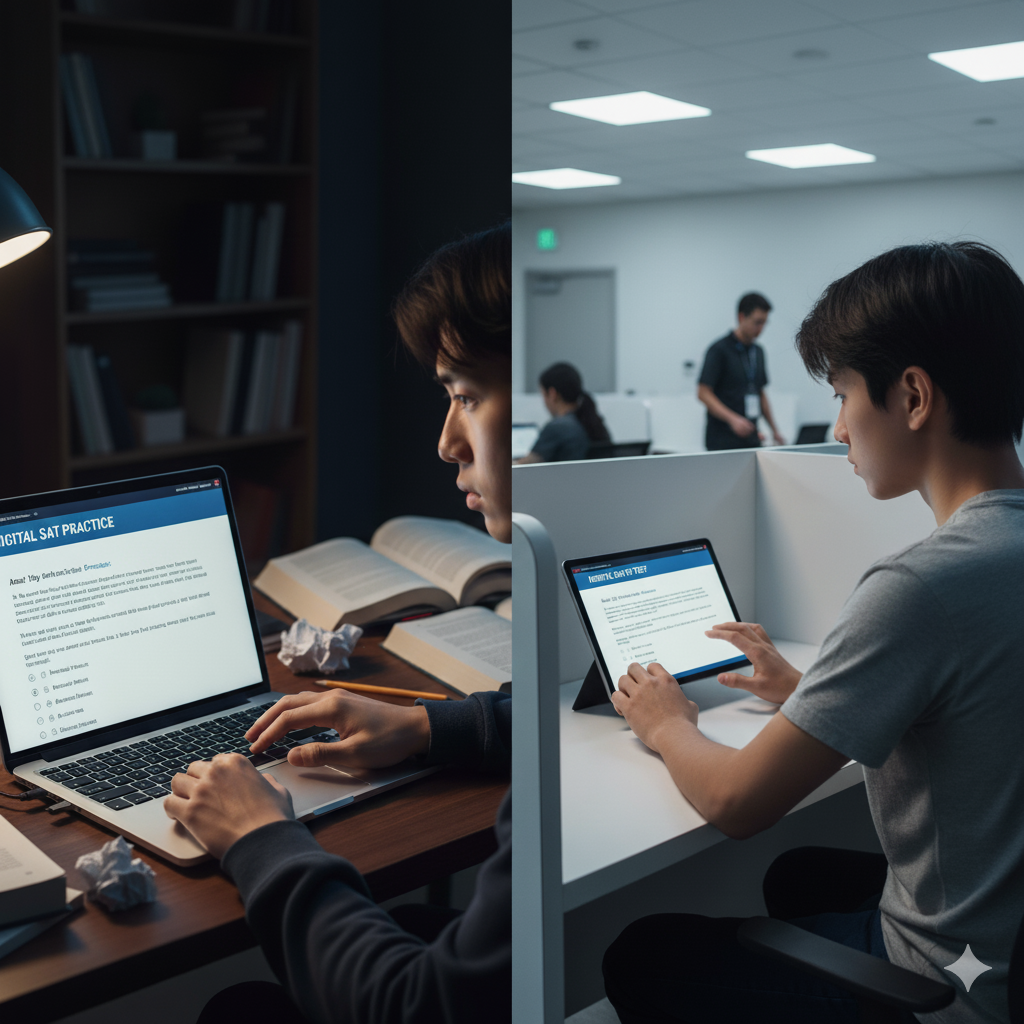

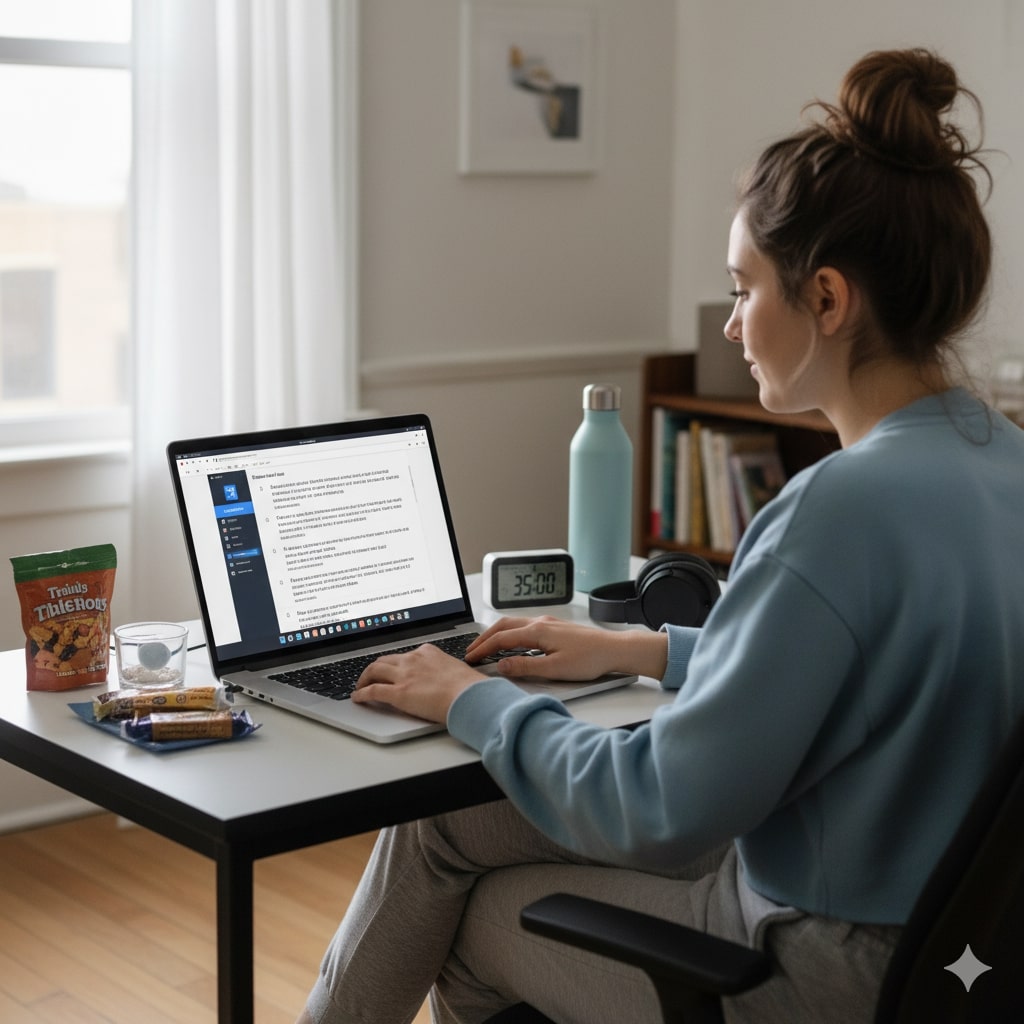
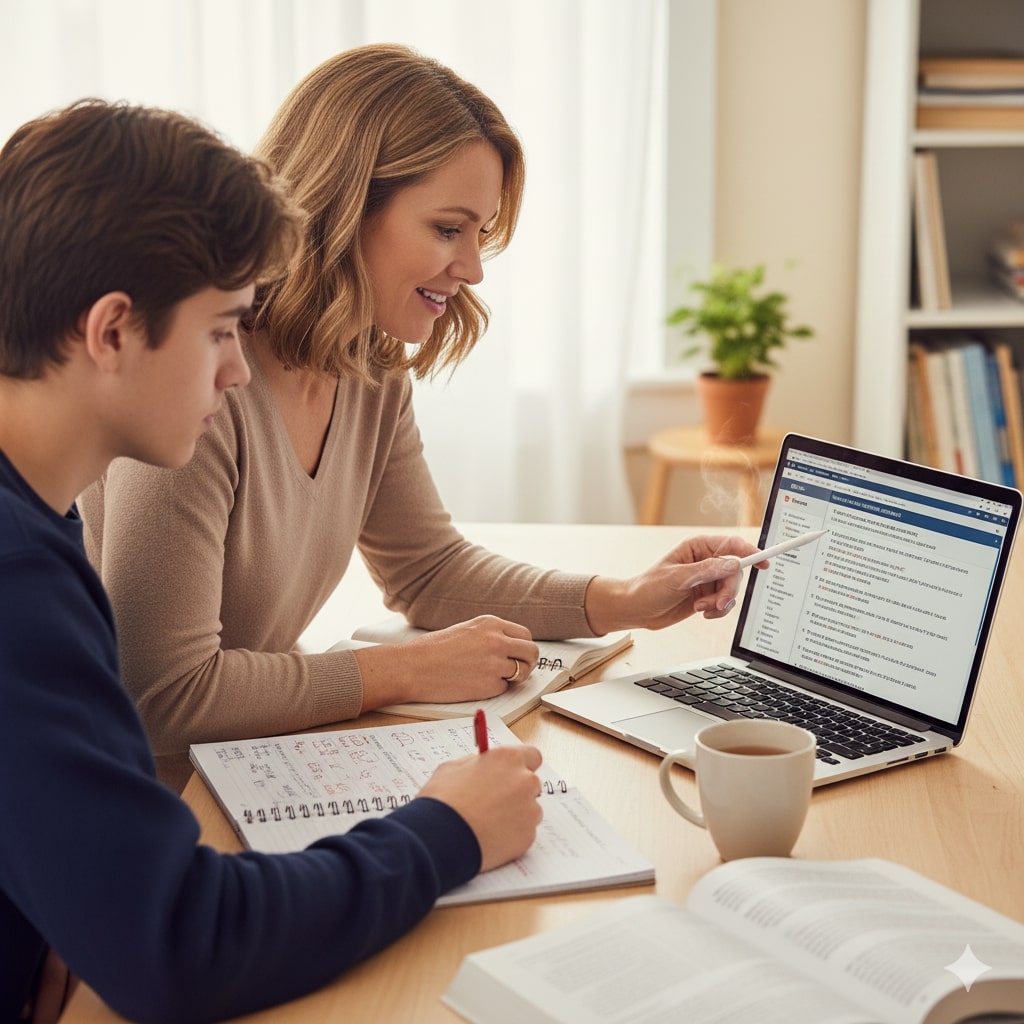
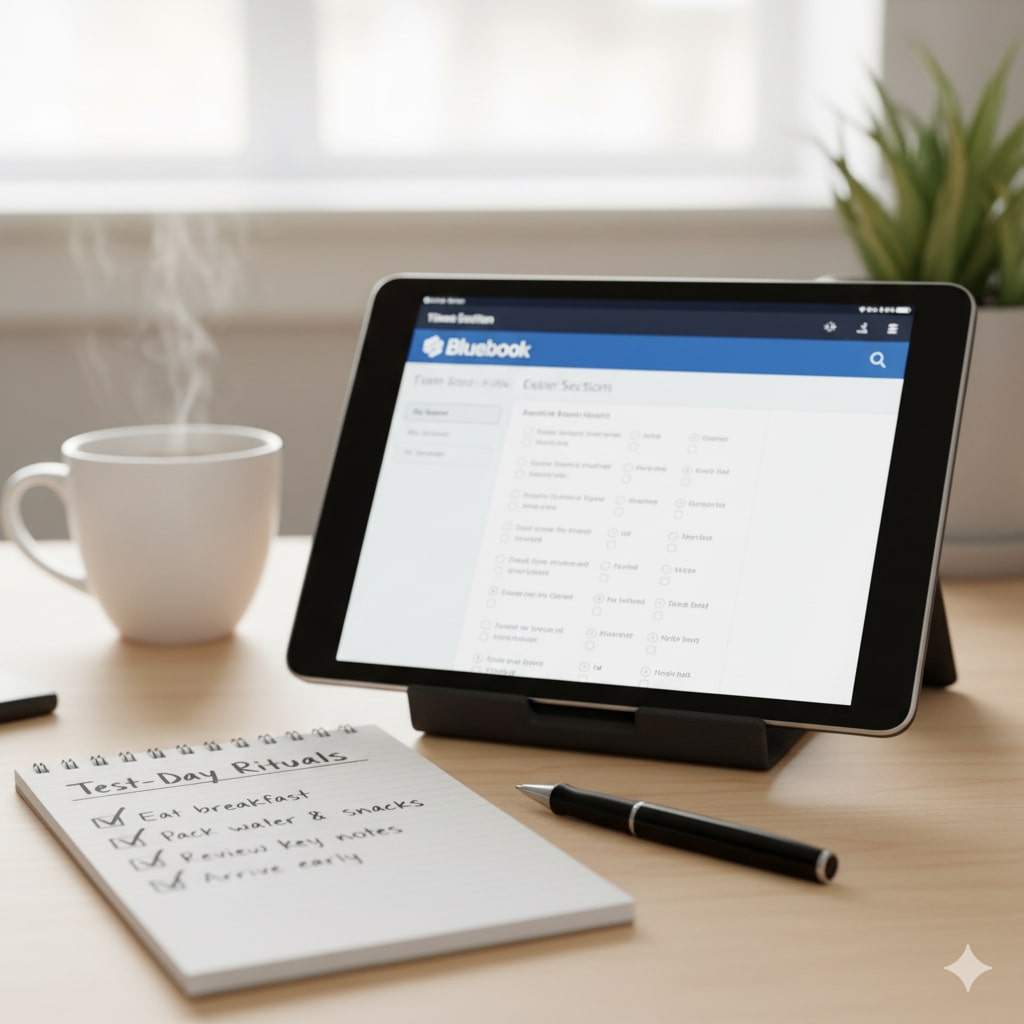

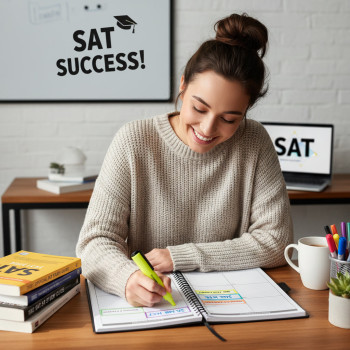


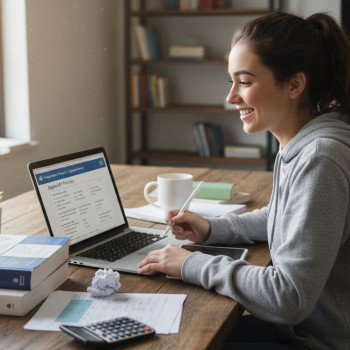









No Comments
Leave a comment Cancel